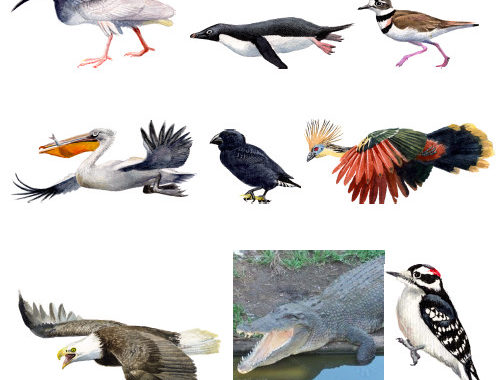An international consortium comprised of hundreds of scientists from around the world has successfully decoded the avian genome. The multi-year project harnessed the power of nine supercomputers and 400 years of computing time to sequence, assemble and compare the full genomes of 48 bird species, shedding light on a wide range of avian evolutionary diversity.
The Avian Phylogenomics Consortium recently published 28 papers, eight of which are featured in a Dec. 12 special edition of Science. The other 20 can be found in Genome Biology, GigaScience and other journals. The findings answer questions about bird evolution ranging from vocalizations, flight patterns, plumage, sex chromosomes and the genetic links to dinosaurs and crocodiles.
While there are more than 10,000 bird species alive today, before this study was forged, only a few (e.g., the chicken, turkey and zebra finch) had their genomes sequenced. The Avian Phylogenomics Project set out to sequence all major branches of birds, including species such as the crow, duck, falcon, parakeet, crane, ibis, woodpecker, and eagle. The bird tissue samples used for the study were collected over the past 30 years. DNA extraction of the frozen tissue was carried out by Duke University and University of Copenhagen, while most of the genome sequencing and the initial analyses of the genomes were performed at the BGI in China.
Project co-leader Erich Jarvis of Duke University and the Howard Hughes Medical Institute lays out the essential details in a Science podcast:
“I’ve been helping to lead an effort with a number of other scientists to sequence the genomes of at least one bird species per order of birds, and we have up to 48 bird species representing over 30 orders,” says Jarvis. “We wanted to use those genomes to resolve the bird family tree of life which has been a difficult problem to figure out for the last hundred years. And we also wanted to use them to do comparative genomics of traits, so we can take birds that have different traits like vocal learning that I’ve studied and try to identify the genes that are responsible for that ability and see if they’re convergent with humans. Now we have over 200 people from 80 laboratories and 20 countries and 23 papers about to be published.”
The collaborators set out to “study evolution across a major vertebrate class, dissect the genomics of complex traits, and resolve a centuries-old debate on the avian species tree.” The debate centers on how bird evolution played out around the time of the dinosaurs and whether key genetic shifts occurred 10-100 million years before the mass extinction or arose because of it.
“Using the entire genome, we’ve been able to date the relationships that occurred around the time of the dinosaur extinction event,” explains Jarvis in the Science podcast. “The comprehensive genomic study showed only four linages survived the mass meteorite extinction event and from those we have 95 percent of the 10,000 living bird species alive today.”
In other words, the asteroidal impact that vanquished the dinosaurs and almost everything else on earth 66 million years ago triggered an explosion in bird evolution. The Cretaceous–Paleogene mass extinction can thus be interpreted as the big bang of bird evolution.
Given that there are approximately 14,000 genes per species, the data-intensive nature of the endeavor required new approaches for computing the evolutionary family trees. Computer scientists Tandy Warnow at the University of Illinois at Urbana-Champaign, Siavash Mirarab, a student at the University of Texas at Austin, and Alexis Stamatakis at the Heidelburg Institute for Theoretical Studies, created the advanced algorithms and deployed them on parallel supercomputers at the Munich Supercomputing Center (LRZ), the Texas Advanced Computing Center (TACC) and the San Diego Supercomputing Center (SDSC).
The next step for the consortium is putting together a database to support future research into complex avian traits. Project participants hope the effort will serve as a model for the comprehensive sequencing of other vertebrate classes.
In the video below, David Mindell, an evolutionary biologist and program director of the NSF Division of Environmental Biology, details many of the key findings from the study:





























































